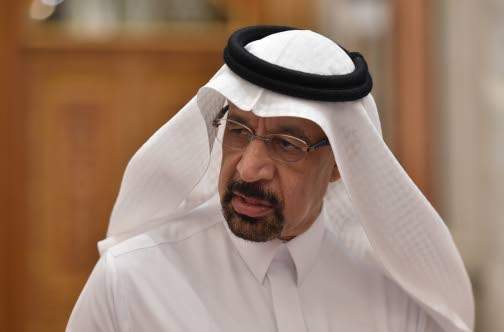RIYADH, Saudi Arabia — Saudi Energy and Oil Minister Khalid al-Falih arrives at the start of a three-day conference called Future Investment Initiative (FII) in the Saudi capital Riyadh last month. (Photo: AFP)
The oil market is experiencing a remarkable turnaround as oil prices have tumbled from recently trading at four-year highs to erasing all the gains in 2018 and plunging into a bear market, having declined by more than 20 per cent from their recent highs.
Oil’s slippage into a bear market came within just five weeks of hitting a four year high in early October, marking one of the biggest declines since a price collapse in 2014. US crude prices also fell for a record 12 consecutive sessions.
The sharp downturn is a reflection of a significant change in the outlook for oil prices. Not so long ago, some market forecasters were predicting the return of US$100 a barrel prices by as early as the end of this year, due to supply concerns emanating from impending US sanctions on Iran. Now, supply is expected to overwhelm demand at the start of 2019, prompting talks of prices returning to the US$40 level.
In the run-up to their highs in early October, oil prices benefited from production cuts by OPEC and its allies which were aimed at removing excess supply, to recover to the US$80 levels from the depths of being in the mid-US$20s in early 2017. Supply cuts were, however, halted in June 2018 on concern that rising oil prices would erode demand and ultimately lead to another collapse in oil prices. Prices, however, continued to rise and reached four-year highs on October 3rd amid speculation that the re-imposition of sanctions on Iran by the USA in early November, the third biggest producer in OPEC would lead to a supply shortage. But then…
In anticipation of these sanctions, OPEC, led by Saudi Arabia, stepped up production in October hoping to stabilise prices. Saudi Arabia also pledged to replace any lost output from the Iranian sanctions. Meantime, additional output from OPEC was being met with increased supply from other major producers such as the USA and Russia. Such has been the surge in production from the USA that it has overtaken Russia as the world’s largest oil producing country with a record output of 11.6 million barrels per day (bpd) soon to be increased to 12 million bpd by early 2019.
At the same time investors were becoming increasingly concerned that signs of slowing global growth would crimp demand for oil at a time when output is soaring.
The International Monetary Fund (IMF) recently cut its forecast for global growth in 2019 citing, inter alia, unresolved trade issues between the USA and China, the two largest economies in the world, as a major headwind to global growth.
http://www.jamaicaobserver.com/sunday-finance/the-rise-and-fall-of-oil-prices_150470




Leave A Comment